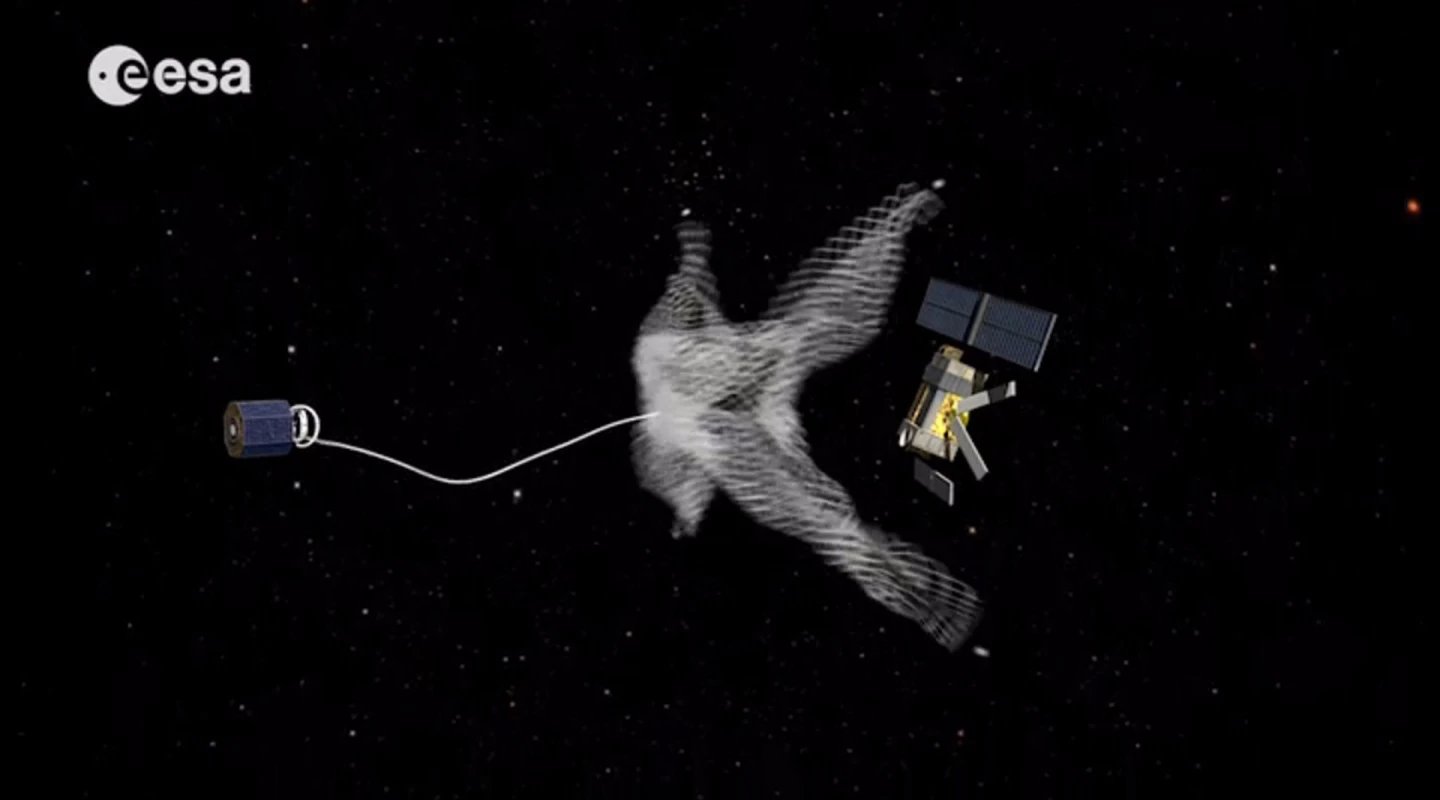ESA has provided a preview of its plan to net space debris by unveiling a prototype net gun designed to envelope and capture tumbling dead satellites. Wojtek Gołebiowski of Poland's SKA Polska, which is developing the gun under a contract with the space agency, used a small version to target and take down a low-flying drone at the Industry Days event for ESA's Clean Space initiative.
ESA says that because the net gun is designed to be used in zero gravity, the device was fired at low power, shooting out a net of multi-colored strands to aid camera tracking and computer models of how it behaves. The video of the demonstration shows the gun capturing the drone or knocking it out of the air at short range.
Space debris is a major problem of the 21st century that only threatens to get worse. Depending on how debris is defined, there are tens or hundreds of thousands of manmade objects in orbit about the Earth. These range in size from tiny particles if solid rocket residue to dead satellites the size of a bus. As the 2009 collision between the Iridium 33 and Kosmos 2251 satellites demonstrated, this debris can result in collisions that can create additional thousands of fragments that can cause even more damage in a cascade effect.

The Clean Space initiative is aiming to reduce the problem by removing larger pieces of debris, such as defunct satellites. ESA says that this has never been attempted before – especially with an automated system. To accomplish a clean up operation, ESA is developing new adaptive guidance, navigation, and control systems, as well as image recognition and on-board processing capabilities.
A key problem is how to capture satellites that have started to tumble as their attitude controls systems fail. This involves learning more about this tumbling behavior and developing devices to actually grab and despin the satellite. For this, ESA is looking at two methods. The first is a robotic arm and the other is the net gun, which fires a square net with weights on the end that envelops the target, so it can be despun and secured.

The end goal of the initiative is an orbital mission called e.deorbit, which will involve a rendezvous with a dead ESA satellite in a low, near-polar orbit at an altitude of 800 to 1,000 km (500 to 622 mi). The disposal satellite will grapple with the target, then slow it down for a controlled re-entry and burn up in the atmosphere.
ESA says that e.deorbit is seeking approval at the ESA Council at Ministerial level late this year, with a projected launch in 2023.
The video below shows the capture net in action.
Source: ESA












